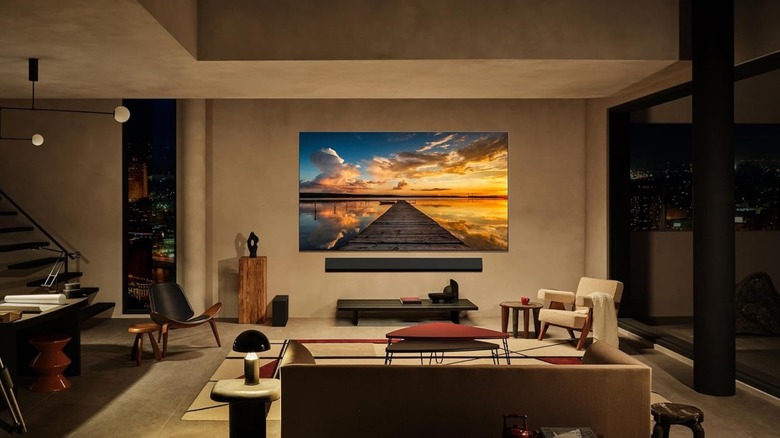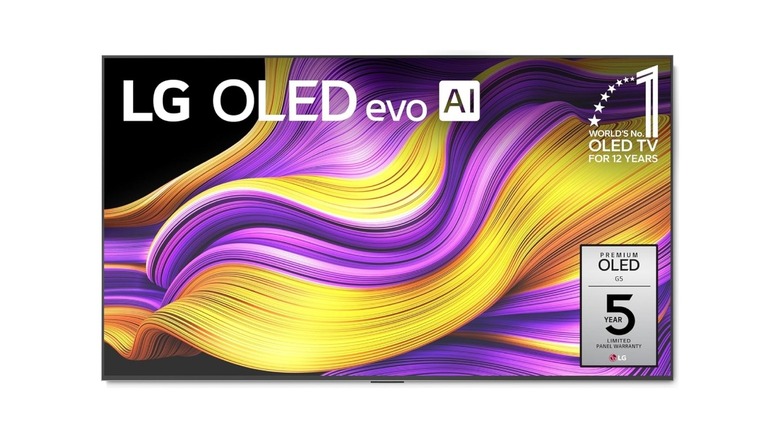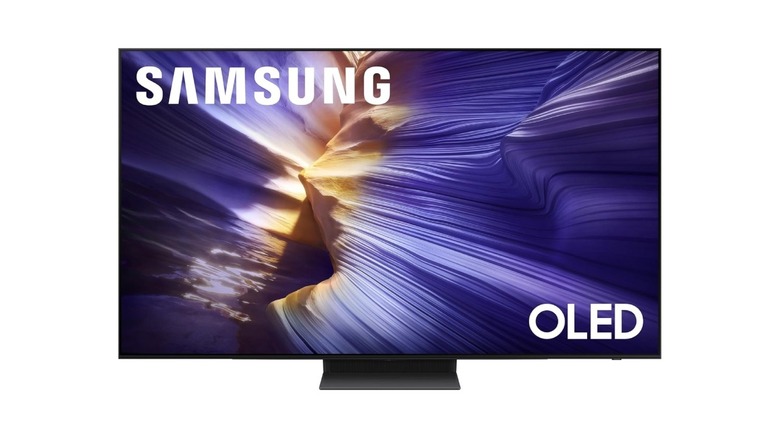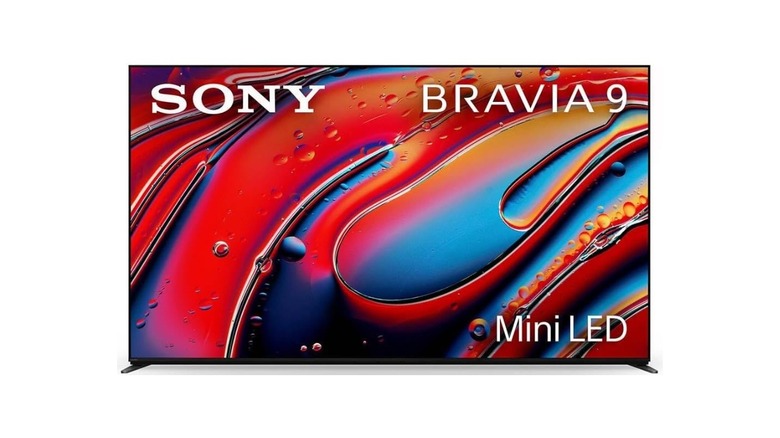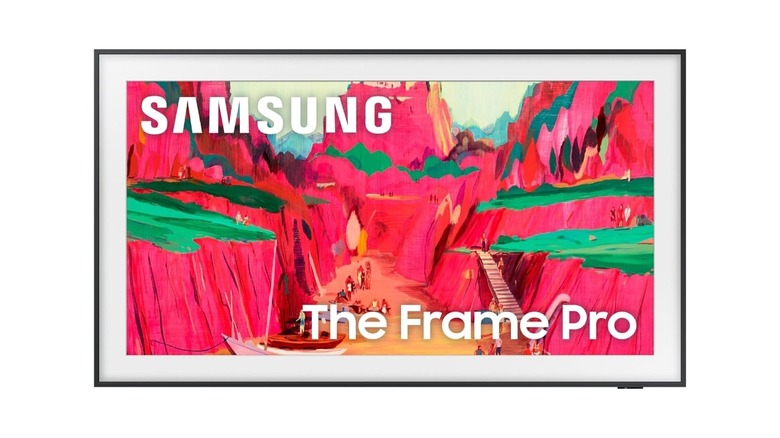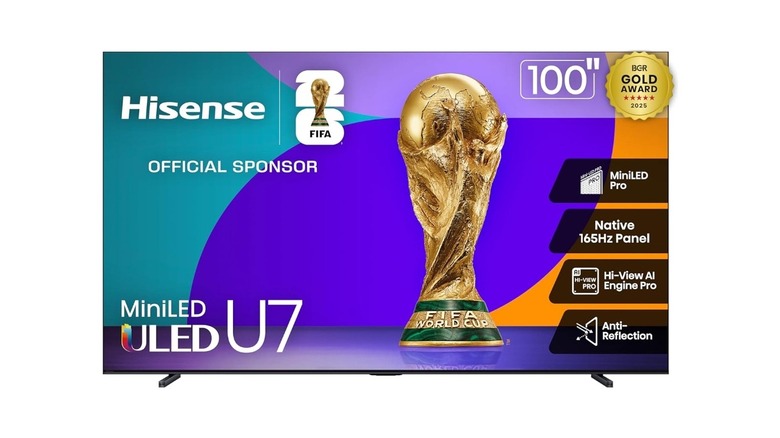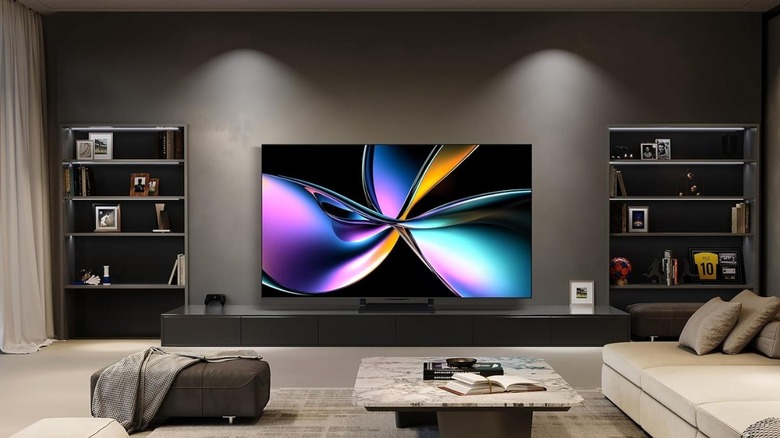5 Of The Best TVs You Can Buy In 2025 (According To Reviews)
We may receive a commission on purchases made from links.
A TV is the backbone of any home entertainment setup. Whether you enjoy watching the NFL with a bunch of friends in your living room, or you just want to watch a few episodes of your favorite show before dozing off after a long day at work, a good TV can take the experience from good to great. That said, it can get difficult to decide which TV you want to buy, especially with so many brands flooding the market with hundreds of models. To add to the dilemma, brands throw in fancy jargon and abbreviations like QLED and OLED, Mini-LED, ULED, and whatnot. So, we decided to ease things for the average consumer by helping you pick the absolute best TV money can buy.
Of course, a single option may not be suitable for all types of users, so we've compiled a list of the best TVs by considering various factors. There are TVs for those who want the best image quality, those who want a huge screen to enjoy sports, those with a console like the PlayStation 5 or Xbox Series X who want to enjoy games at a high refresh rate, and those who prioritize aesthetics. Notably, OLED and Mini-LED TVs offer the best experience in terms of colors, vibrancy, and overall image quality, so all the TVs in this list have one of these two panels. We've also recommended TVs of different sizes to suit various types of rooms. That said, all those TVs are available in multiple sizes.
LG G5 65-inch OLED TV
LG's OLED TVs have proven their mettle over the years, with the fifth-generation model — the LG G5 — being among the best in terms of picture quality. Thanks to the 4K OLED panel, you get deep, inky blacks and bright whites, improving the content-viewing experience — especially when watching content in Dolby Vision HDR. Compared to previous generations, the LG G5 has improved peak brightness levels, thanks to its proprietary Brightness Booster Max technology. Pair this with an anti-glare coating, and you have a TV that can be used even in bright environments without any issues. Even if you're a gamer, the LG G5 has you covered. The 120Hz refresh rate ensures you can plug in your console and enjoy games at high frame rates.
Then, there's support for NVIDIA G-Sync, AMD FreeSync Premium, and VRR. LG's WebOS handles UI duties, which is both a pro and a con. It's responsive and fast, which means you can switch between multiple apps and streaming platforms with ease. That said, WebOS doesn't have nearly as many apps as the Play Store on Google TV. This can be sorted rather easily by connecting an external streaming device.
The bezels are slim, which improves the visual experience. Moreover, the Dolby Atmos support ensures the audio is also clear and loud. If you're looking for a reliable OLED TV that gets most basics right, and suits all types of content, you can't go wrong with the LG G5.
Samsung OLED S90F 65-inch TV
If you're eyeing an OLED TV but don't want to spend over $2,500 on the LG G5, the Samsung S90F is an excellent alternative. It's substantially cheaper than the LG G5 while still offering a similar set of features. Samsung claims to be using an advanced AI processor that can optimize the picture and sound quality automatically based on the type of content you're watching on the TV. The S90F has a 4K OLED panel with extremely slim bezels. There's support for HDR+, along with a smart remastering engine that can convert SDR media to HDR. Similarly, the TV can also upscale content to 4K for a sharper viewing experience. While the Samsung S90F goes head-to-head against the LG G5 in terms of panel quality, where it one-ups the LG is in terms of refresh rate.
Compared to the 120Hz refresh rate of the LG G5, the Samsung S90F can achieve a refresh rate of 144Hz — something that some gamers are going to appreciate. While gaming is definitely its strong suit, the S90F loses to the LG G5 in terms of peak brightness levels. The LG G5 gets noticeably brighter, which certainly results in a more immersive viewing experience. Samsung's Tizen OS runs the show on the S90F, which — albeit barebones — is snappy to use. If an OLED TV that doesn't break the bank is what you're looking for, you cannot go wrong with the Samsung S90F. It has its downsides, but it's one of the most reliable OLED TVs in its price range.
Sony Bravia 9 75-inch Mini-LED TV
While OLED TVs have impeccable image quality, there's one issue that plagues a few of them — image retention or burn-in. This phenomenon usually occurs over time and can significantly ruin the experience of watching content on your TV. This is where Mini-LED TVs come to the rescue. Apart from the image retention issues, Mini-LED solves another problem — high, sustained brightness levels. While OLED panels have inky blacks thanks to the fact that specific LEDs can be turned completely off, they cannot attain extremely high levels of sustained brightness. This is because the individual LEDs may overheat — reducing their lifespan. So if you're concerned about burn-in, or you want higher brightness levels, consider the Sony Bravia 9 QLED Mini-LED TV.
Thanks to the fact that Mini-LED TVs are slightly more affordable than OLED panels, you can get a larger 75-inch TV for the same price as a 65-inch LG G5. The 4K panel can refresh at 120Hz with support for variable refresh rate or VRR. Sony refers to the Bravia 9 as the brightest 4K TV it has ever made, which only makes the content appear better when coupled with the TV's vibrant color reproduction. Unlike TVs from LG and Samsung, the Sony Bravia 9 runs on the Google TV OS, which gives you access to a modern UI and the Play Store for tons of apps. If you're looking for a large TV that's also amply bright, the Sony Bravia 9 is the way to go.
Samsung The Frame Pro 65-inch Mini-LED TV
When buying a new TV, most people focus on factors such as image quality, panel type, resolution, and brightness. However, there is a section of society that wants a TV that not only produces good image quality but also looks pleasing when hung on a wall. The Samsung Frame Pro TV perfectly fits that use case. When mounted on a wall, Samsung's Frame Pro looks just like a painting. It has extremely slim bezels that resemble the frame of an artwork. Apart from its looks, though, the Frame Pro is also an excellent TV. It has a 4K QLED Mini-LED panel that can produce bright and colorful images. When not viewing content, you can use the Samsung Frame Pro in the Artwork mode, which essentially displays paintings and other forms of artworks in the form of a screensaver.
Another highlight of the Frame Pro TV is its wireless One Connect box. Instead of including ports on the TV itself, which would increase its thickness, Samsung has devised a wireless box that connects to the TV over a Wi-Fi network. This box has all your usual ports, like HDMI, USB, Ethernet, etc. This also creates a more seamless experience when using the TV, as there won't be any dangling cables. Notably, the Frame Pro produces slightly dull colors, and the blacks aren't as deep as some other options in this price range. Owing to this, we would rather recommend the Samsung S90F at a similar price, purely for better picture quality. That said, the Frame Pro is an absolute beauty in terms of aesthetics, so get it if you want to accentuate your living room.
Hisense U7 100-inch MIni-LED TV
While some users want an aesthetically pleasing TV, others may prioritize a large panel to enjoy content. If a 65-inch or 75-inch TV isn't sufficient for your space, and you're looking to build a massive home theater setup, the Hisense U7 100-inch Mini-LED TV is an excellent choice. Considering the huge size and the fact that it has a Mini-LED panel, the price is quite affordable. It only gets better when you take a look at the specs. The large 4K panel refreshes at 165Hz — making it ideal for gamers. The brightness can go all the way up to 3,000 nits, which is higher than some smartphones out there. It also has an anti-reflective panel, so you can even use the Hisense U7 in bright environments. Then, there's support for HDR10+, Dolby Vision, and IMAX Enhanced.
As you can tell, the TV is decked up with features. It's also available in a wide variety of sizes, so even if you don't have sufficient space for the 100-inch model, you can pick up the 75-inch version for just around $1,000, which is a bargain for anyone looking for a budget-oriented Mini-LED TV. That said, it's not without its downsides. The color reproduction is average, and the black levels could have been much better, especially considering the panel gets plenty bright. So, darker blacks would have resulted in a better contrast ratio. Having said that, massive Mini-LED TVs are hard to come by, especially at the Hisense U7's price point. That's exactly what makes this TV an excellent option.
How we picked these TVs
All the TVs mentioned above have raving reviews from both users and renowned publications that have years of experience testing TVs. Notably, we at SlashGear have personally tested older versions of some of the TVs in the list, like the LG G3 and the Sony Bravia 7. As mentioned earlier, we picked TVs with OLED or Mini-LED panels, since they offer deep inky blacks, high brightness levels, and vibrant colors that make images look better. Another important factor we've considered is the OS that the TVs are running on. Some users prefer Google TV OS, since it provides access to the large library of apps on the Google Play Store. On the other hand, those who prioritize fast performance may lean toward LG's webOS-based TVs.
The variety of size options for every TV was also an important factor for a product to make it to this list. Since every user may have different size requirements based on the available area and viewing distance, we've made sure to include options that are available right from 42 inches all the way up to 100 inches — for those who want a home theater experience.
